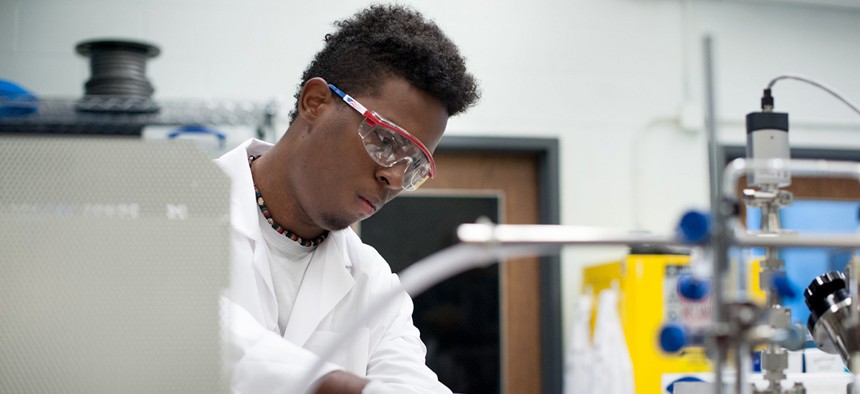sponsor content What's this?
NSF Looks to Cloud to Accelerate Scientific Research

Presented by
FedTech

The National Science Foundation will work with nonprofit Internet2 to explore using commercial clouds for cutting-edge research computing.
The National Science Foundation supports scientists in Antarctica who conduct research on biology, climate change, geology and astrophysics. NSF was also instrumental in serving as a bridge between ARPANET and the internet. From cyberspace to the farthest reaches of the earth, the agency pursues its mission of scientific research with gusto. Now, it wants to explore taking that mission further into the cloud.
Last month, the NSF announced a partnership with Internet2, a nonprofit computer networking consortium, to strike up partnerships with commercial cloud providers to accelerate scientific research.
The NSF-funded Internet2 project, Exploring Clouds for Acceleration of Science (E-CAS), will look into the feasibility of using commercial clouds as an option for leading-edge research computing and computational science to support a range of academic disciplines. Amazon Web Services and Google Cloud Platform are the initial cloud computing providers supporting E-CAS.
“The E-CAS project has the potential to not only demonstrate the effectiveness of current commercial cloud computing services in supporting a range of applications that are important to the science and engineering research communities, but also to enable these communities to leverage the innovative technologies and capabilities to significantly accelerate scientific discoveries,” Manish Parashar, director of NSF's Office of Advanced Cyberinfrastructure, said in a statement.
NSF Sees Significant Potential in Cloud for Research
NSF has pledged $3 million for a two-phased approach to be managed by Internet2. The first phase will support six different scientific and engineering applications and workflows with cloud computing allocations and resources for development and code migration, according to the NSF. The NSF will select two final projects from the original six and will then spend a year focused on delivering scientific results.
“I think people are very excited about it,” Parashar tells FCW. “Like with any new, disruptive trend there is some amount of learning, and adaptation is required for change, but people are excited.”
The E-CAS project will invite proposals from researchers across the full range of science and engineering domains who have traditionally relied on high-performance computing resources and are interested in using cloud for their research.
The NSF will evaluate proposals funded through E-CAS on two primary criteria. They include whether they can achieve the best time-to-solution for scientific applications and workflows using cloud computing, and the novel use of heterogeneous hardware resources and platforms, such as graphics processing units, CPUs and field-programmable gate arrays to support and extend scientific applications and workflows.
A key benefit of the cloud for scientific research is that scientists can get access to flexible computing resources that can scale up or down to meet their needs, Parashar says. “You can add more resources as needed and in doing a lot of big data, data-driven computation, that becomes important,” he tells FCW.
The partnership with Internet2 on E-CAS represents one of several recent investments the NSF has made with cloud vendors, including AWS, Google, IBM and Microsoft Azure. For example, the NSF notes, those services committed up to $15 million in cloud resources for projects funded by the NSF's Critical Techniques, Technologies, and Methodologies for Advancing Foundations and Applications of Big Data Sciences and Engineering (BIGDATA) and Big Data Regional Innovation Hubs and Spokes (BD Hubs and BD Spokes) programs over a three-year period that began in 2017.
This content is made possible by FedTech. The editorial staff of Nextgov was not involved in its preparation.
NEXT STORY: How Will Federal Cloud Use Evolve in 2019?





